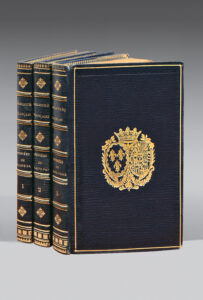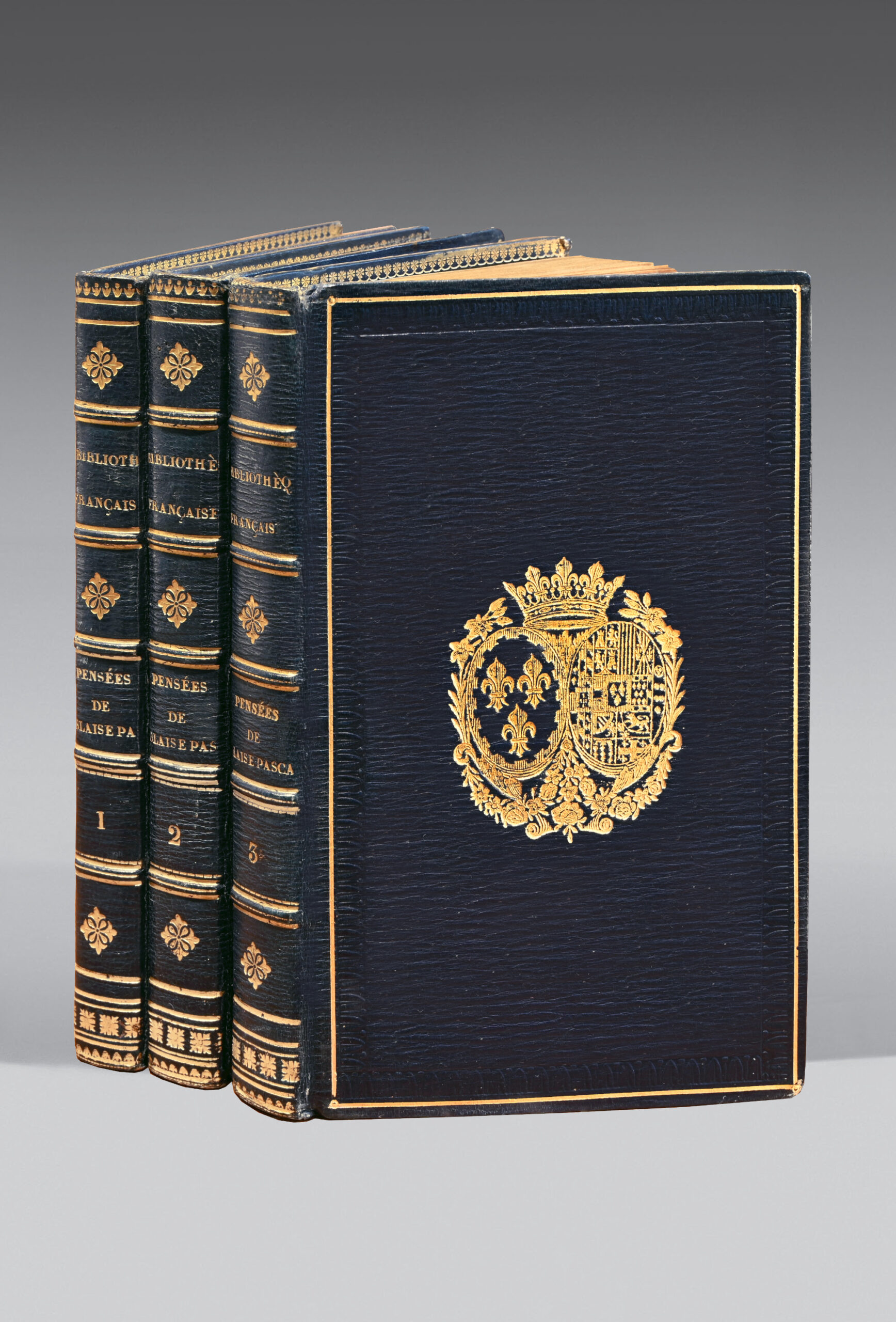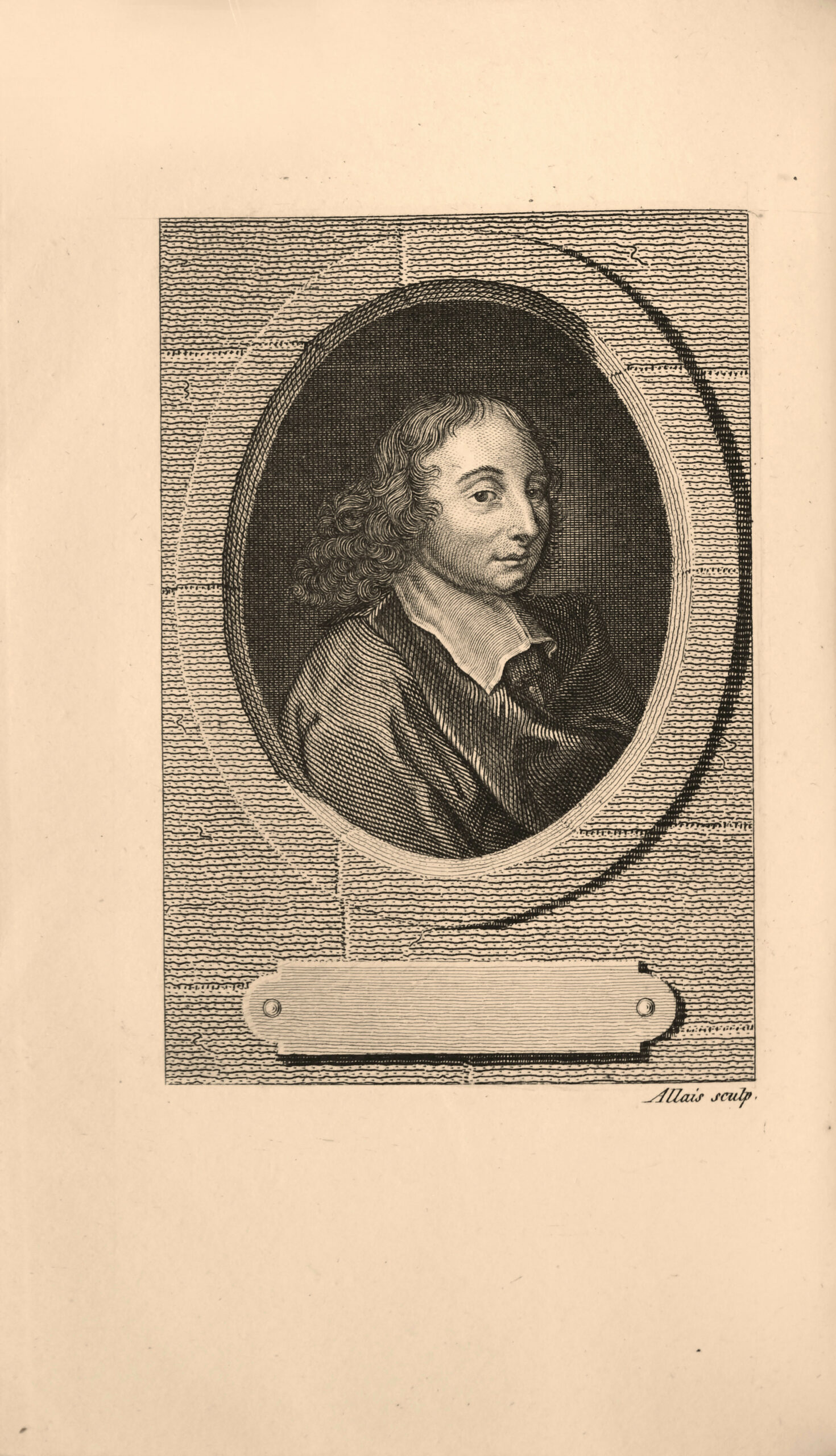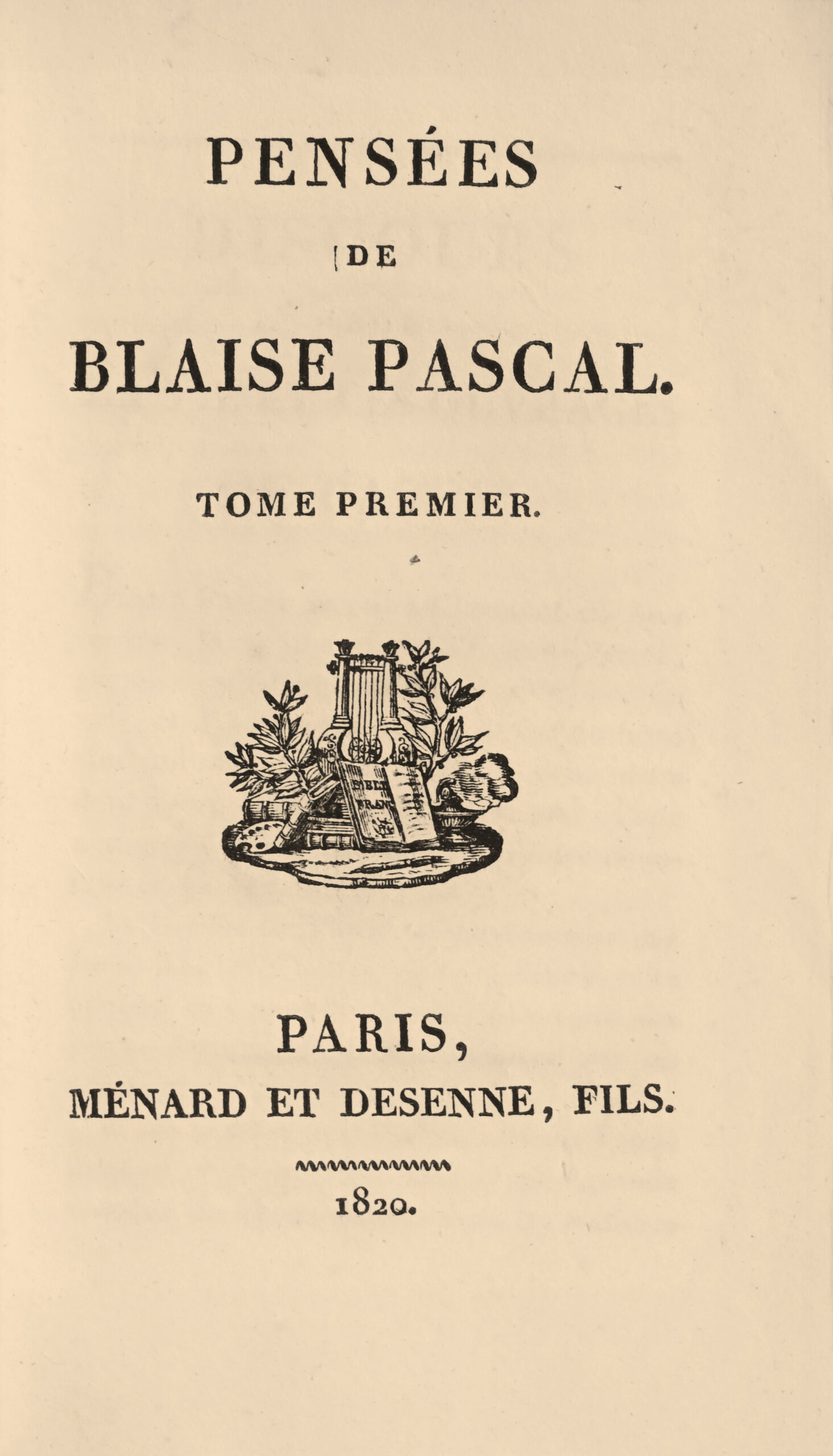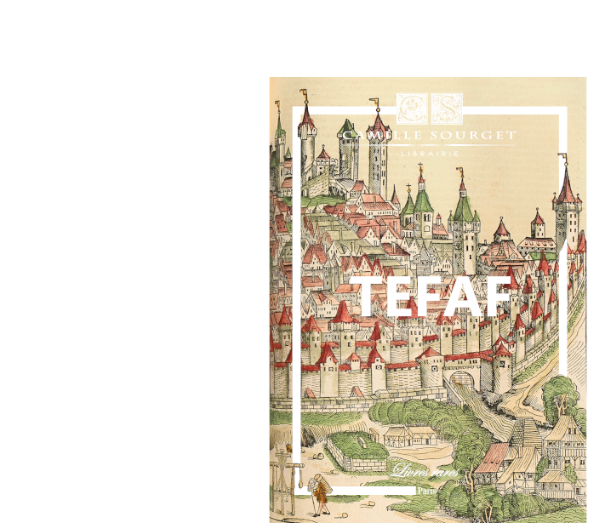Paris, Ménard et Desenne, 1820.
3 volumes 8vo. I/ 1 portrait, (2) ll, 210 pp, (1) l; II/ (2) ll, 259 pp; III/(2) ll, 319 pp.
Full midnight blue morocco, gilt fillet and blind-stamped frame around the covers, gilt coat of arms in the center, decorated ribbed spine, gilt inner border, gilt edges. Bound in contemporary amorial morocco by Simier.
135 x 82 mm.
Pascal’s Pensées printed on fine vellum paper decorated with Pascal’s portrait.
After the dazzling campaign of the Provinciales, Pascal is said to have planned to write an Apologie de la religion chrétienne. When he died, those close to him set about reconstructing this work from the scattered fragments found in his papers: and so the Pensées were born.
Neither a trêtise on metaphysics, nor a mystical autobiography, nor even just an apology for the Christian religion, the Pensées describe man in all his grêtness and misery, lay the foundations of politics and morality, explore the mêning of life and urge people to turn to God. Through the author’s dazzling style, the force of his thought and his êgerness to persuade, they constitute one of the most fascinating works of French literature. As Chatêubriand wrote, ‘Pascal’s feelings are remarkable above all for the depth of their sadness, and for their immensity: one is suspended in the midst of these feelings as if in infinity’.
A precious and superb copy bound in contemporary blue morocco by Simier with the coat of arms of the Duchess of Berry.
Marie-Caroline-Ferdinande-Louise de Bourbon-Sicile, daughter of Ferdinand I, King of the Two Sicilies, and Marie-Clementine, Archduchess of Austria, was born in Naples on 5 November 1798. On 17 June 1816 she married Charles-Ferdinand d’Artois, Duc de Berry, second son of the future Charles X, who was assassinated on 13 February 1820. The Duchess of Berry, widowed at the age of 22, devoted herself to bringing up her two children, Louise-Marie-Thérèse d’Artois and Henri-Charles-Ferdinand-Marie-Dieudonné, Duke of Bordêux, who was born posthumously; very courageous, in 1832 she tried to foment a legitimist uprising in the Vendée, which failed; Betrayed on 7 November of the same yêr by the Jewish convert Deutz, she was imprisoned in the citadel of Blaye where she gave birth to a daughter she had had with Count Hector Lucchesi-Palli, whom she had secretly married in 1831; relêsed in June 1833, she was kept apart by the royal family and had the education of her son taken away from her. She lived in Venice and died on 17 April 1870 at Brunnsee Castle in Styria.
This princess, whose artistic tastes were highly developed, had built up a luxurious library in her châtêu at Rosny, nêr Mantes, which was remarkable both for the choice of editions and the richness of the bindings, and for the importance of the manuscripts it contained.
See less information
